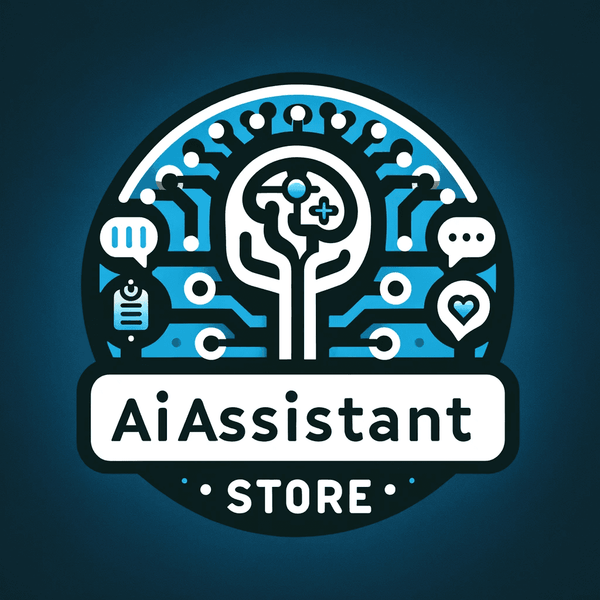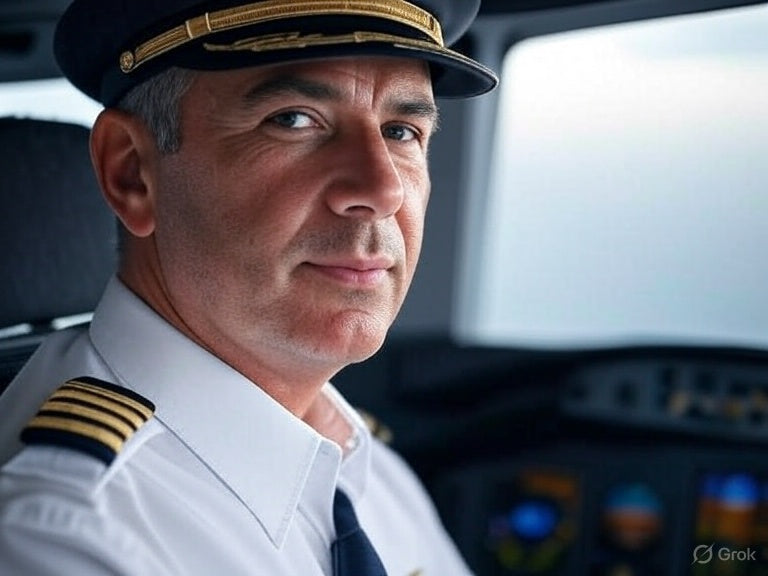Nervous? Curious? Maybe secretly hoping for smoother cockpits? You’re not alone. The idea that airplanes might one day fly themselves feels oddly comforting and a bit sketchy - like trusting a self-stirring saucepan not to fling soup everywhere. So let’s dig in, with a people-first, source-backed breakdown that still keeps things casual. By the end, you’ll have a clearer sense of where things actually stand, what’s inching closer, and whether the whole question Will pilots be replaced by AI? is even framed the right way.
Articles you may like to read after this one:
🔗 Will AI replace accountants
Exploring automation’s impact on accounting jobs and future demand.
🔗 Will AI replace data analysts real talk
Examining AI’s role in data analysis and human expertise balance.
🔗 Will software engineers be replaced by AI
Insights on AI coding tools and developers’ evolving responsibilities.
What you’ll walk away knowing 🧭
-
The brutally short answer to Will Pilots be replaced by AI
-
What AI in cockpits is genuinely good at (and not)
-
How regulators and safety science actually view it
-
Today’s tech you can ride with vs. tomorrow’s experiments
-
The weird halfway ideas: single-pilot, ground-assisted, hybrids
-
Why cargo will get poked first before passengers
-
Human-factor headaches: mode mix-ups, rusty hands-on skills, cross-checking gaps
-
A slightly clunky comparison chart you can glance at boarding
The blunt short answer 🧪
Not in passenger airliners anytime soon. U.S. rules under Part 121 are clear: you need at least two pilots - captain plus first officer. That’s not a suggestion, it’s written into law [1]. Europe, meanwhile, has been running serious studies on Extended Minimum Crew Operations (eMCO) and Single-Pilot Ops (SiPO). Their own conclusion? With current cockpit setups, they can’t yet prove it’s as safe as two-crew. Which is regulatory-speak for: nope, not yet [2].
Decoder note: when they say “equivalent level of safety,” they mean the automation-plus-procedure setup has to at least match the safety outcomes of two pilots - including when weird, messy, low-probability-but-high-consequence failures pile on.
Why AI in cockpits can actually help 🚀
When people hear “AI pilot,” they imagine some android with a captain’s hat. Regulators don’t see it that way. They treat AI as software tools, which must go through safety assurance like any other critical system. Framed like that, the value is clear:
-
Workload smoothing during crazy-busy moments, nudging pilots toward the critical bits.
-
Consistency and alerts so fewer small misses slip by when distractions pile up.
-
Sharper precision in routine tasks - speed, altitude, energy - so performance doesn’t wander.
-
Backstop safety nets that spot conflicts early and suggest clean, standard responses.
Truth is, when automation is well-built and pilots are trained properly, it feels like magic. When it’s cryptic or used sloppily, it’s more like a gremlin waiting to mess with you. That tension defines the whole game.
Regulations, roadmaps, and reality checks 🧱
-
Two pilots remain mandatory in U.S. airline ops under Part 121. Period [1].
-
EASA’s review of single-pilot schemes flagged messy gaps: how to detect sudden pilot incapacitation, who cross-checks what, handling workload spikes, and coping with abnormal scenarios. Their verdict: safety equivalence not yet proven [2].
-
FAA’s AI stance is refreshingly plain: don’t anthropomorphize. Treat AI like a tool, integrate carefully, assure it inside existing frameworks. That clarity keeps accountability straight [3].
If you came in thinking the answer was already “yes, pilots will vanish soon,” this is probably jarring. Aviation moves only at the speed of safety proof.
What tech you can actually fly with today 🧩
Plenty of systems are already running live:
-
Garmin Emergency Autoland (GA + light jets): takes over and lands if the pilot can’t. Certified since 2020, now spreading across types. A lifesaver - but still framed as backup, not replacement [4].
-
Airbus DragonFly trials: auto-taxi, auto-diversion, and landing assistance on big jets. Crucially pitched as helping the pilot, not replacing.
-
Smarter collision-avoidance + alerts: fewer nuisance alarms, earlier cues, clearer instructions. All augmenting, not subtracting.
One pilot, ground help, and missing puzzle pieces 🧩🧩
There’s no on/off switch here - more like a sliding scale:
-
Single Pilot + Automation: redistribute second-pilot tasks to software and checklists. Sounds nice on slides; reality struggles with sudden failures and workload spikes [2].
-
Single Pilot + Ground Operator: one pilot onboard, remote expert monitoring multiple flights. In theory, efficient. In practice? Only works if comms are rock-solid, handoffs crisp, and boredom-overload cycles managed. Humans aren’t robots, whether in the cockpit or a ground chair.
-
Research findings: The FAA keeps hammering on accountability and incremental assurance, rather than fuzzy “AI teammate” fantasies [3].
So if you’re still asking whether these count as “AI replacing pilots” - well, only if they can demonstrably equal two-pilot safety in rare, tangled scenarios. That’s a very high bar.
Cargo first 📦✈️
It’s way less controversial to try autonomy on cargo aircraft. Several projects are chasing certification for gate-to-gate autonomy with a supervising human (remote or onboard). Think: re-tasked pilots, sensor overload, and carefully restricted routes.
Human factors: the paradox 🧠
Automation is fantastic at preventing errors - and equally fantastic at creating brand-new ones. Two recurring traps:
-
Mode confusion & attention drift: Crews sometimes misinterpret what the system is actually doing. Fix = transparent design + training around mode awareness.
-
Skill fade: Smooth autopilot stretches erode hand-flying chops. FAA even issued notices reminding airlines to keep manual skills sharp [5].
Despite all that, commercial flying remains one of the safest things humans do. Why? Because safety is layered: humans, tech, and procedures overlapping like armor.
Slightly bad metaphor interlude 🌧️🛫
Flying with solid automation is like owning a fancy umbrella that tilts itself, blocks gusts, maybe pings you about rainbows. But sometimes the wind goes sideways and - yep - you still need hands. Pilots are those hands. (Okay, maybe a clumsy metaphor, but it works well enough.)
The messy comparison chart 🧮
(Because reality rarely fits neatly in tables.)
| Option | Who it’s for | Price-ish | Why it works now |
|---|---|---|---|
| Two pilots + today’s automation | Airlines, bizjets, passengers | Built-in | Proven, resilient, cross-checked. |
| Single pilot + enhanced automation | Cargo trials, niche ops | Retrofit + cert | Promising, but safety equivalence gaps remain. |
| Single pilot + ground operator support | Future cargo ideas | Systems + staffing | Depends on secure links + clean task-sharing. |
| Remote-supervised cargo aircraft | Logistics, controlled routes | High upfront | Less exposure onboard, but operational concepts still shaky. |
| Passenger emergency autoland button | GA passengers, light jets | Option packages | Saves lives in emergencies. Not a “pilot killer.” |
| Full autonomy, no human at all | Drones today, not airliners | Varies | Works at small scale. Big jets? Needs to crush two-pilot safety records first. |
What would have to change before fewer pilots fly your jet? 🧩
-
Demonstrated equal-or-better safety in rare compound scenarios. Not vibes - data.
-
Transparent automation with crystal-clear mode awareness and fail-operational behavior.
-
Hardened comms/cybersecurity for any remote elements.
-
Accountability + certification pathways that regulators trust [3].
-
Training that keeps manual skills alive, not just button-pressing [5].
-
Public + insurance acceptance after the above - not before.
-
Global harmonization so one border crossing doesn’t upend compliance.
The bigger safety picture 📈
Aviation advances in layers - tech, humans, and procedures cross-protecting each other. That’s why changes come slow and conservative. Near-term? Expect pilot-empowering automation, not empty seats up front.
So… Will pilots be replaced by AI? 🧩
Better question: Which tasks should be automated, when, and under what safety proofs - while keeping humans in command? The FAA literally warns against personifying AI. Their roadmap frames it as assured tools, not “robot copilots” [3].
So the trajectory is: more assistance, tested in cargo, slowly migrating to passengers if it earns the right. The pilot doesn’t vanish - he or she shifts toward supervision, decision, and resilience.
Conclusion 💬
AI in cockpits isn’t magic and it isn’t doom. It’s just another control system that has to prove itself through certification and training. For passengers, that means more safety-assist features first, empty seats never (at least not soon). For pilots, it means evolving into sharper system managers while still keeping hand-flying alive. Do that right, and the question “Will AI replace pilots?” fades, because the reality is more interesting: pilots plus smart, proven automation making aviation even safer.
TL;DR 🧳
-
No, AI won’t replace airline pilots anytime soon.
-
Yes, automation keeps coming - carefully, assuredly.
-
Cargo first, passengers later, only after safety proofs stack up.
-
Humans stay central, because judgment and cross-checking aren’t optional.
References
[1] FAA (14 CFR §121.385 - Composition of flight crew). U.S. Government Publishing Office. https://www.govinfo.gov/link/cfr/14/121?link-type=pdf§ionnum=385&year=mostrecent
[2] EASA (eMCO-SiPO Extended Minimum Crew Operations). Conclusions summary page. https://www.easa.europa.eu/en/research-projects/emco-sipo-extended-minimum-crew-operations-single-pilot-operations-safety-risk
[3] FAA (Roadmap for Artificial Intelligence Safety Assurance). “Avoid Personification: Treat AI as a tool, not a human.” https://www.faa.gov/media/82891
[4] Piper Aircraft Press Release (May 18, 2020). First Garmin Autoland-equipped aircraft to receive FAA type certification (M600/SLS). https://cutteraviation.com/2020/05/first-garmin-autoland-equipped-aircraft-to-receive-type-certification/
[5] FAA SAFO 13002 - Manual Flight Operations. Encourages maintaining manual flying proficiency. https://www.faa.gov/sites/faa.gov/files/other_visit/aviation_industry/airline_operators/airline_safety/SAFO13002.pdf

